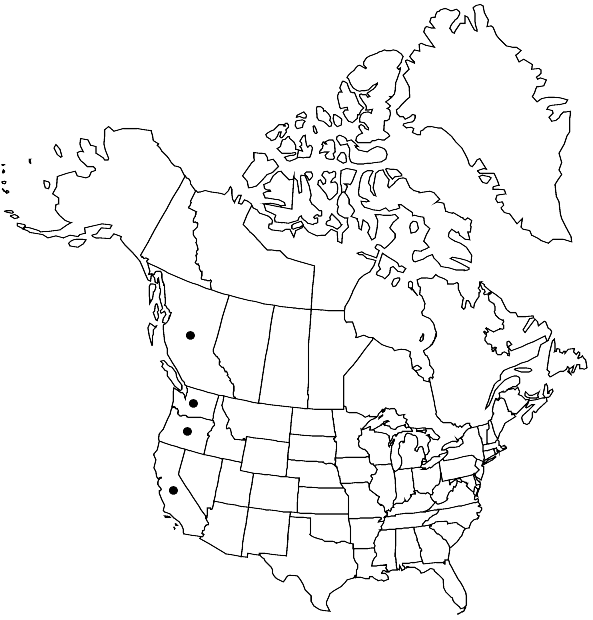Campylopus introflexus
Muscol. Recent., suppl. 4: 72. 1818,.
Plants 0.5–5 cm, in dense mats, yellowish to olive green, tomentum present or almost absent. Leaves 4–6 mm, erect-patent when wet, appressed when dry, lanceolate, straight, with entire margins; alar cells absent or formed by thin-walled, hyaline to reddish, inflated cells; basal laminal cells hyaline, rectangular, thin-walled, extending higher at margins and forming a V-shaped area; distal laminal cells incrassate, shortly rectangular to oblique, chlorophyllose; costa filling 1/2–3/4 of leaf width, excurrent in a hyaline hair tip, which is conspicuously 90° reflexed, in transverse section showing adaxial hyalocysts and abaxial stereids, shortly lamellose at back with ribs 1–2 cells high. Specialized asexual reproduction occasionally by deciduous stem tips. Seta 7–12 mm, yellowish brown to brownish in age, often several sporophytes from the same plant, curved or sinuose. Capsule brown, 1.5 mm, slightly asymmetric and curved when empty. Calyptra ciliate at base. Spores 12–14 µm.
Habitat: Soil along trails, base of trees, flat roofs of buildings, peat in bogs, sand
Elevation: 0-200 m
Distribution

B.C., Calif., Oreg., Wash., South America (Argentina, Brazil, Chile), Europe, s Africa, Pacific Islands (New Caledonia, subantarctic Islands, New Zealand), Australia.
Discussion
Campylopus introflexus occurs in masses in sand dunes along the west coast of North America and throughout the Southern Hemisphere. The species was introduced in Great Britain in 1942, and since the beginning of the 1970s has been aggressively spreading through Europe. It now ranges from Iceland to Spain and from Ireland to Poland. The first record in North America dates from August, 1975, and was made on a gravel roof of a building of Humboldt University, Arcata, California. The species is undoubtedly introduced in North America and is spreading here as rapidly as in Europe. The name C. introflexus was used previously for C. pilifer, thus all old references for C. introflexus in North America have to be referred to that species. Also, specimens of C. surinamensis and C. oerstedianus from North America were named as C. introflexus. Campylopus introflexus is easily recognized by the reflexed hair points. Female plants have terminal perichaetial buds. Problems may rarely arise with forms from shaded habitats, in which the hairpoints are absent or so short that they are not reflexed.
Selected References
None.